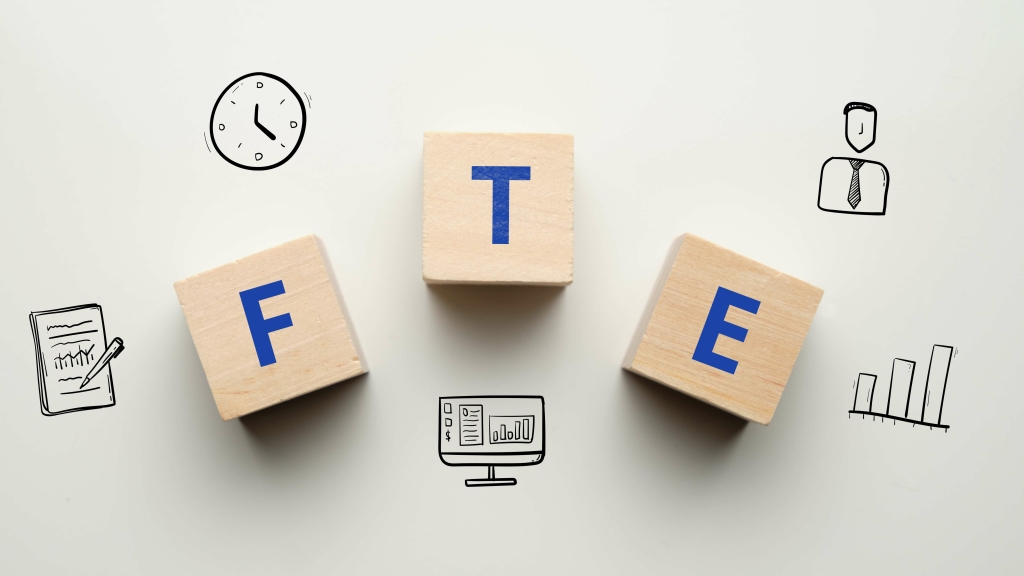Content
The Best Medical Billing Services of 2022 Find the right medical billing services for your… Though lenders and investors consider both of these metrics when assessing the financial health of your business, they’re not the same. Discover the products that 31,000+ customers depend on to fuel their growth. Brainyard delivers data-driven insights and expert advice to help businesses discover, interpret and act on emerging opportunities and trends. accounts receivable can make impact on liquidity of the company, thus it is important to pay attention to this metrics.
- The balance sheet shows the total amount of accounts payable, but it does not list individual transactions.
- Companies can also receive early payment if their customers give them access to early payment programs such as supply chain finance or dynamic discounting.
- Learn financial statement modeling, DCF, M&A, LBO, Comps and Excel shortcuts.
- The debit is to the bad debt expense account, which causes an expense to appear in the income statement.
- Your bookkeeping team imports bank statements, categorizes transactions, and prepares financial statements every month.
Each of the Maintenance documents will need to be completed for your organization before customer invoicing can begin and the Transaction documents can be used. Inefficient workflows regardless of the size of the AR management workforce. Accounts receivable automation refers to technology solutions that automate many of the repetitive and manual tasks that constitute AR management. No matter how unique your requirements, Accounts Receivable has the features and flexibility to improve the processes that help you generate revenue. Workday is expected to replace the current OFM Accounts Receivable System. Harold Averkamp has worked as a university accounting instructor, accountant, and consultant for more than 25 years.
Accounts Payable Vs Accounts Receivable
The accounts receivable turnover ratio is calculated by dividing net annual credit sales by average accounts receivable. The change in A/R is represented on the cash flow statement, where the ending balance in the accounts receivable (A/R) roll-forward schedule flows in as the ending balance on the current period balance sheet. On the other hand, if a company’s A/R balance declines, the payments billed to the customers that paid on credit were received in cash. Central Accounts Receivable provides Harvard’s local billing units that sell services and/or goods with a state of the art billing system with which to invoice, track, and collect on their receivables.

Thus, a company that factors its accounts receivable may be able to cut staffing and save in other areas. They work with other departments to verify and record transactions and resolve account discrepancies. They also collect the correct amounts from their customers on time by providing the necessary support throughout those processes. These give insight into the state of their accounts and enable them to manage them in a quick and accurate manner. Accounts receivable are viewed as assets because they come with expected future revenue. Accounts payable are viewed as liabilities, because they represent debts owed to other businesses.
How To Record Accounts Receivable
Companies can achieve this in a number of different ways, including the use of AR finance and receivables finance solutions. Factoring, for example, enables a company to sell its invoices to a factor at a discount, thereby receiving a percentage of the value of an invoice straight away.

When a company sells goods on credit, it has to pay for raw materials weeks or even months before receiving payment for the sale from its customers. This can lead to cash flow constraints and make it difficult to fulfil customer orders or invest in business growth and research and development (R&D). As such, companies may choose to finance their trade receivables – in other words, seek early payment in exchange for a discount.
Encore Plus De Significations Pour Accounts Receivable
As with any other form of collateral, the bank should be concerned about incentive effects as well as liquidation value. However, valuing partially processed inventories is difficult and a credit-analysis art form. Both raw materials and finished goods inventories are easier to value and have greater liquidity than partially processed goods. In many cases, raw material inventories have the broadest market and the lowest price volatility. As with other collateral, monitoring is crucial in that inventory stocks are constantly in flux, with potentially damaging consequences for the secured lender. Typically, an Accounts Receivable Clerk works directly with customers to help them make the proper payments for goods and services.
- The store will have a regular flow of income and may stock a supply of a product knowing that they have a buyer for it.
- Accounts receivable represents money owed by entities to the firm on the sale of products or services on credit.
- Accounts receivable refers to money due to a seller from buyers who have not yet paid for their purchases.
- In accrual accounting, when finance teams record all unpaid expenses, they act as placeholders for cash events.
- Once the plumber completes the job, they give the invoice of $538 to the customer for the completed job.
You record it as an account receivable on your end, because it represents money you will receive from someone else. Accounts payable on the other hand are a liability account, representing money that you owe another business. With NetSuite, you go live in a predictable timeframe — smart, stepped implementations begin with sales and span the entire customer lifecycle, so there’s continuity from sales to services to support.
Accounts Receivable Documents
The issuance of an invoice implies that the seller has granted credit to a customer. Credit limits may be reduced during difficult financial conditions when the seller cannot afford to incur excessive bad debt losses. https://www.bookstime.com/ are the funds that customers owe your company for products or services that have been invoiced. The total value of all accounts receivable is listed on the balance sheet as current assets and include invoices that clients owe for items or work performed for them on credit. Accounts payable are typically recorded upon receipt of an invoice based on the payment terms both parties agreed to when initiating the transaction. When a finance team receives a valid bill for goods and services, it is recorded as a journal entry and posted to the general ledger as an expense.
- Stock-outs, which lead to lost sales, may be due to the incapacity to accurately project sales patterns or master production.
- This report is used to derive the allowance for bad debts, and is also a key tool of the collections department, which uses it to determine which invoices are sufficiently overdue to require follow-up action.
- The latter method is preferred, because the seller is matching revenues with bad debt expenses in the same period .
- If you don’t keep track of accounts receivable, you may forget to bill certain customers, or you may not know if you’ve been paid.
- Although this example focused mainly on accounts payable, you can also do this with accounts receivables as well and we can demonstrate that with this next example.
- This can lead to cash flow constraints and make it difficult to fulfil customer orders or invest in business growth and research and development (R&D).
Account receivables are classified as current assets assuming that they are due within one calendar year or fiscal year. To record a journal entry for a sale on account, one must debit a receivable and credit a revenue account.
Trade receivables are defined as the amount owed to a business by its customers following the sale of goods or services on credit. Also known as accounts receivable, trade receivables are classified as current assets on the balance sheet. Accounts receivable refers to money due to a seller from buyers who have not yet paid for their purchases. The amounts owed are stated on invoices that are issued to buyers by the seller.
Is Accounts Receivable An Asset Or Liability?
In the next risk category may be customers who keep good records and have a well-diversified accounts receivables portfolio. For such borrowers, the bank may impose additional reporting requirements, including detailed assignment, collection, and aging schedules. In the highest risk category are borrowers with weak balance sheets and inadequate working capital. Here the bank requires all standard reports plus copies of shipping documents, delivery receipts, and assigned invoices against which the bank will lend.

Auditors use different methods to evaluate the efficacy of accounts payable and accounts receivable safeguards. When auditors test AP, they typically look for instances of quantity errors or, in some cases, unethical behavior on the part of the vendor.
Between these two instances, you may need to follow up with the client to receive payment. To determine profitability, add up all your assets, including accounts receivable, and subtract your total accounts payable, or liabilities, which are what you owe to suppliers and vendors.
Conversely, this creates an asset for the seller, which is called accounts receivable. This is considered a short-term asset, since the seller is normally paid in less than one year. When you have a system to manage your working capital, you can stay ahead of issues like these. Calculating your business’s accounts receivable turnover ratio is one of the best ways to keep track of late payments and make sure they aren’t getting out of hand. This shows the average number of days it takes your company to make payments to creditors and suppliers and indicates how well you’re managing both cash flow and supplier relationships. Due to the fear of default, a business should only give short credit terms for accounts receivable where possible.
Canty, who was president of HJH-affiliate U.S. Tax Recovery Partners, was responsible for managing monies owed by customers — referred to as accounts receivable. Aging of receivables logged as 0–30 days, 30–45 days, 45–60 days, and 60–90 days. Accounts 90 days or more past due are measured by dividing individual receivables into the total, as seen in Exhibit 7.1. Concentration is tested by acceptable receivables to total receivables, and the average of the five largest receivables summed to total receivables. For example, large receivable exposures require a lot more work, and may necessitate increased lender fees. Factoring is also commonly referred to as invoice factoring, business factoring, or simply the selling of accounts receivables.
Other common payment terms include Net 45, Net 60 and 30 days end of month. The creditor may be able to charge late fees or interest if the amount is not paid by the due date.
At the end of the week, month or year the construction company will clear the total amount, clearing their entry in accounts receivable and start again for the next period. A company’s trade receivables or accounts receivable is an important consideration when it comes to calculating working capital. Accounts receivable, abbreviated as AR or A/R, are legally enforceable claims for payment held by a business for goods supplied or services rendered that customers have ordered but not paid for. These are generally in the form of invoices raised by a business and delivered to the customer for payment within an agreed time frame. It is one of a series of accounting transactions dealing with the billing of a customer for goods and services that the customer has ordered. These may be distinguished from notes receivable, which are debts created through formal legal instruments called promissory notes. One drawback of the system is that the store may need to pay for the product in full at time of purchase, leaving it out of pocket until payment of the bill on accounts receivable.
The accounts receivable turnover ratio is a simple financial calculation that shows you how fast your customers are at paying their bills. Your general ledger will show your total accounts receivable balance, but to dig into outstanding payments by individual customers, you’ll usually need to refer to the accounts receivable subsidiary ledger. For every sale or purchase, your business will either issue or receive an invoice.




